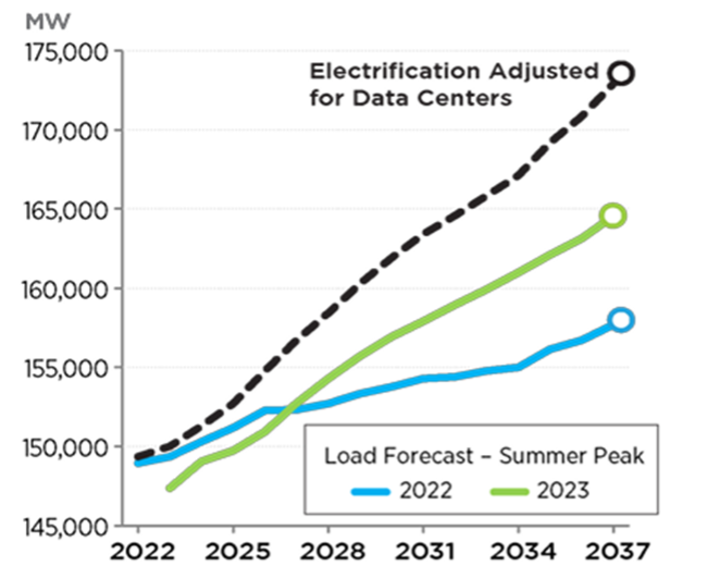Data center locations are primarily driven by access to large amounts of base load electric power. CBRE reports that a continued worldwide power shortage is significantly inhibiting the global data center market’s growth. Low supply, construction delays and power challenges are impacting all markets, and the worldwide power shortage continues to fuel price increases for data center capacity. AI advancements are projected to significantly drive future data center demand as high-performance computing will require rapid innovation in data center design and technology to manage rising power density needs. Despite power supply issues, North American data center inventory grew by 24.4% year-over-year in Q1 2024, adding 807.5 MW across Northern Virginia, Chicago, Dallas and Silicon Valley. Northern Virginia led with 391.1 MW of new supply, due to demand from public cloud providers and AI companies.
The U.S. energy delivery system that ran the Industrial Revolution and made the United States a global economic powerhouse is facing substantial challenges that threaten the economic future of the nation, states, and regions.

For the last several years, utilities throughout the United States have been facing COVID-19-based supply chain challenges for the materials needed to distribute electricity to customer sites. Some of the primary areas of concern include distribution transformers, conductors, utility poles, and large transformers. Utilities seeking to acquire all these components are seeing significant delays and steep price increases: a pad-mount distribution transformer, for example, now costs close to three times more than it did pre-pandemic, and lead times for delivery have increased by 12 months. Large transformer manufacturing will also have major long-term issues, with demand expected to double by 2027 and the steel industry already hitting maximum capacity. According to Deloitte, a combination of disruptors is driving supply chain gridlock and impacting end-to-end operations in the electric power sector.
Data centers have the potential to double their energy usage by 2026, according to a recent International Energy Agency (IEA) report. IEA forecasts that data centers’ total electricity consumption could reach more than 1,000 terawatt-hours (TWh) in 2026 with the electricity demand for data centers driven by new Artificial Intelligence (AI) applications equal to the energy consumption of Japan. In 2022, 460 terawatt-hours (TWh) were consumed by data centers, representing 2% of all global electricity usage—that amount is expected to jump to 6% by 2030. The share of U.S. electricity consumed in the transportation sector is also increasing as electric vehicles enter the marketplace.

Due to the rise in electrification, PJM is forecasting significant long-term and medium-term load increases – more than 40,000 MW in the next 15 years. At the exact time that electricity demand is dramatically on the rise, public policymakers are driving a transition of the U.S. sources of energy award from fossil fuels to renewable sources that generally cannot produce the base load power needed for data centers and heavy manufacturing. Generating additional base load power is a critical issue for federal and state policymakers to address to capture an AI economic benefit.
[1] Ibid.
[1] Ibid.
[1] Ibid.
[1] Ibid.